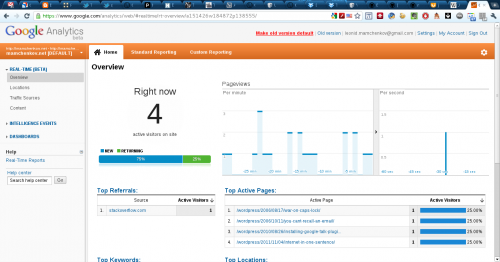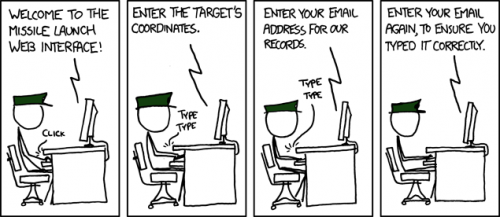In the last few month, Google Analytics team haven’t been getting much sleep I guess. They release features upon features upon features. I usually don’t have the time to properly check every feature they do right when they do it, so I keep a browser tab with an announcement open until I get to play with it. Sometimes though, either I lose the tab or close it or lose interest or lose hope that I will ever get to it.
Somehow I managed to miss it completely or forget to play with the Real Time beta functionality of Google Analytics. Today I stumbled upon this feature in my reports and I have to say it’s absolutely awesome. If you can’t find it straight away, switch your Google Analytics interface to the new version, navigate to Home tab at the top, then choose Real Time (beta) in the menu on the left, and click on Overview. If you have any sort of traffic on your site at that moment, you’ll see a screen like this, which will update in real time.
During your regular hours, especially on the small sites, it would probably be too boring to watch. But it can save you a lot of time and pulled out hair during a traffic spike.
If I had a busy website and an office full of people, I’d probably put a big screen or a projection on a wall with full screen page of those stats. How cool would that be!



